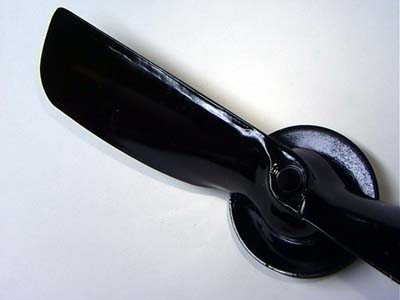
(stolen
from Dale Clinton's Model A board)
Here's the link
I've also added a copy of Bob Murphy's article on Late 31 fan blades that appeared in the
September-October issue of MARC NEWS. Thanks Bob!
Vince has written some more on the issue, and granted me permission to use it. The page is regards to repop water pump shafts, with specific attention to the fan blade taper. You'll find it on the (repop vs orginal page). Thanks again to all the contributed....jm

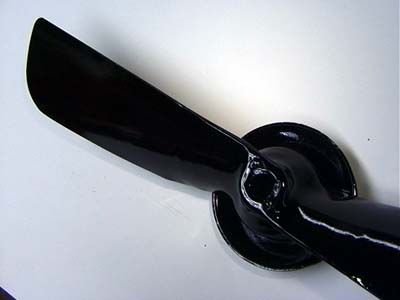
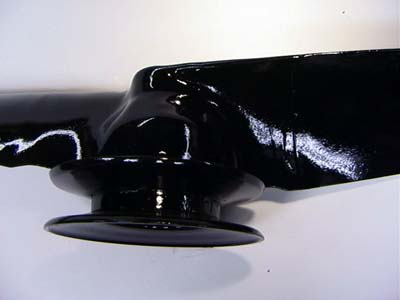
"My primary focus is on the potential weaknesses of the early fans.
AND FURTHER COMMENTS BY Vince
"Actually, the leading edge of the blades are not in a true plane. They are obviously symetrical, but the outer tips are forward of the hub slightly, forming a very slight 'conical' shape when spinning."
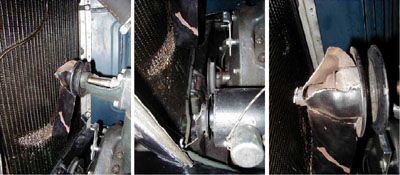
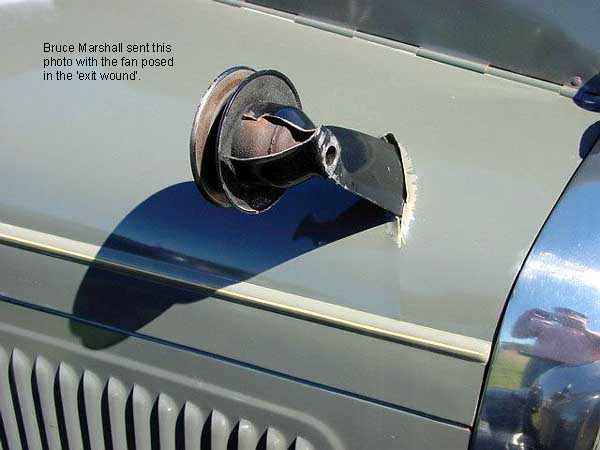
"I am sure many of you, like me, have heard about the use of the late '31 fan blade on the driver cars to avoid the problem of the broken fan blade going through the radiator or hood, or maybe even both.
For those of you unfamiliar with the late '31 fan blade, it looks much like any other blade except that instead of being a sandwich of two pieces of metal from one end to the other, the layer on the side of the blade toward the engine is terminated about three-fourths of an inch on the outboard side of the pulley. It is very easy to spot, just look for the straight edge of metal that ends on the underside of the fan.
It is considered to be a superior fan to the earlier fans, so much so that the Judging Standards Committee has permit- ted the late '31 fan to be used with any year car. I have even seen these fans for sale for as much as $150 since they are so good!
On the way home from St. Louis last summer, I found that even with an "indestructible" item such as the late '31 fan blade, Murphy's Law can still come into play!
While running along about 50 mph, I heard a tinny clatter from under the hood that lasted only briefly, but enough to convince me that I had better stop and have a look. Sure enough, a piece of the fan blade was lying in the engine splash pan, and a hole in the radiator was leaking profusely. The photographs tell the story. The fan not only punctured the radiator, but also got tangled with the fan belt and the generator pully and got them too.
Mike Herring, one of the Sycamore "A" members on the trip, had a spare fan. I had a spare generator complete with pulley and by pinching the radiator tubes together to slow the leak, I was able to come on home with no further problems (I might mention that I, too, now have a spare fan in my car).
The moral of the story is, "keep a watch on your fan blade, even if it is a late '31 blade."
In my case, I permitted myself to be lulled into a false sense of security by the "indestructible" late '31 fan blade, and neglected the periodic blade check for cracks. Result - bad news.
I still feel however, that there is enough of an advantage with the use of the two-blade fan that it is worth the trouble. Not only is it a requirement to qualify for a blue ribbon car, it is also convenient when it is necessary to remove the water pump. With the four-blade fan, I have always found it necessary to remove the radiator first. Some folks feel that the four-blade fan is better for cooling, but I have always used the two-blade fan and solved my cooling problems by use of a good radiator. I have never been convinced that the extra air movement of the four-blade fan really did any good anyhow, especially since it actually presents an additional load, and thus generates more heat (there ain't no free lunch!).
Although this is the first time I, personally, have had a problem with a fan blade, and have driven many thousands of miles with a late '31 blade, I have begun a practice of including a close check of the fan in my usual driving checklist. This is a little more bother, and negates the advantage of the late '31 blade in my mind, since if I am going to have to bother to check it, I can just as easily check an earlier blade as I can a late '31 blade. In fact, I now have an earlier blade on my car, as I haven't yet repaired my late '31 fan.
With the fan blade check now a part of my driving inspection routine, I expect to drive many more thousands of miles without any "fan blade through the radiator or hood" problems." Bob Murphy
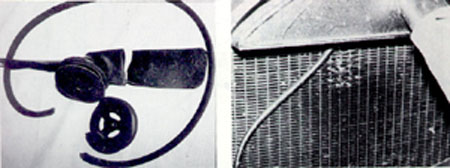
Page designed by Jim Mason July, 2007